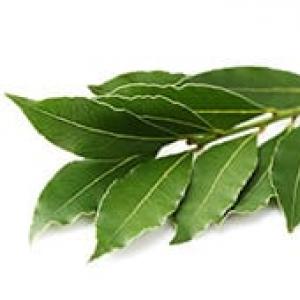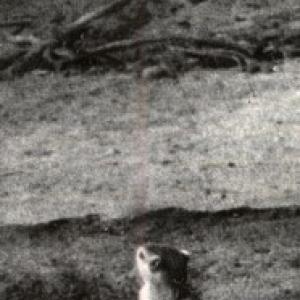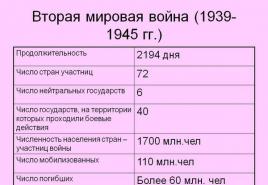Information center "central house of knowledge". Pika animal. Lifestyle and habitat of the pika Altai pika
Appearance
Spreading
The Altai pika is distributed in the south of Eastern Siberia, in Mongolia (Khangai, Mongolian and Gobi Altai (partially)). There are 3 areas of the range on the territory of Russia:
- western (Altai Territory, Sayan Mountains, Tuva),
- central (Baikal basin, Barguzinsky ridge)
- eastern (South-Eastern Transbaikalia, Borzinsky district).
Information about the habitat of the Altai pika in Northeast China, in the province of Gansu, refers to the Alashan pika, which for a long time was considered as a subspecies of the Altai Ochotona alpina argentata.
Fossil remains are known from Late Pleistocene cave deposits of western and northwestern Altai
Altai pika, 07/23/12, Gorny Altai, near Mount Sailyugem. The remaining winter fur is clearly visible on the back of the body; this is an unfinished spring molt.
Lifestyle
The most characteristic habitats are moss-covered rock piles and bedrock outcrops, particularly in open forests and taiga. Does not avoid areas of forest vegetation. It is also found in the upper reaches of small taiga rivers and streams, where heavy clutter with windbreaks creates good protective conditions. In the high-mountain tundra it lives in rocky areas, “fields” of moraine boulders, in accumulations of stones among thickets of dwarf birch and alpine meadows. In the mountain taiga it prefers green-mossy forests, especially cedar forests. In Altai, Kuznetsk Alatau, Western Sayan it is found at altitudes of 1270-2100 m above sea level in the forest, subalpine and alpine belts. The main shelters are the voids between the stones; Inside, the pika makes a nest of cereal leaves, moss and thin roots. In soft peat soils it can dig holes up to 1 m deep. In winter it leads a predominantly snow-covered lifestyle, only occasionally emerging through vents to the surface.
The Altai pika leads a diurnal lifestyle. On hot sunny days it is active in the morning (from 5 a.m. to 10 a.m.) and in the evening, on cloudy days it is active almost all day. In winter, activity decreases. As a rule, it settles in colonies, often long-term and large, where the population density can reach 40-60 animals per 1 hectare. Pikas live in pairs, consisting of a male and a female, who together prepare food. They are intolerant of the presence of neighbors on their territory. Family areas have clear boundaries, marked by the secretion of the cervical glands. The acoustic repertoire of the Altai pika is diverse; A typical danger signal is a loud whistle, reminiscent of a bird whistle.
Nutrition
The food spectrum is very wide and varies depending on the habitat and season; it includes various plants, as well as fungi and lichens. In the warm season, it prefers green parts of plants, flowers, seeds, and berries. Intensive preparation of feed for the winter begins in mid-July and continues until October. Animals living on rocky areas have reserves in the form of bundles of hay, which are placed in cracks and niches between the stones; in the forest there are “stacks” of hay under the trunks of old trees. The height of the stack can reach 2 m, the weight of undried hay is 27 kg (Western Sayan). Among the food favorites of pikas is fireweed ( Chamaenerion latifolium), succulent grasses and sedges, alpine knotweed ( Polygonum alpinum), rhodiola rosea, black currant shoots. Pikas often store hellebore, although they do not eat it. A pair of pikas typically have 2 to 7 larder spaces 1 to 3 m apart, often in the same locations year after year.
Reproduction
The breeding season lasts from April to July - August. There are 1-2 broods per year, less often 3; the number of cubs in the litter is 1-4. The maximum number of cubs is 8. Pregnancy lasts about 30 days; newborns are developed and covered with hair. Young animals of both sexes begin to reproduce only in the 2nd year of life. Maximum life expectancy is up to 6 years.
Number
The Altai pika is quite common and in some places numerous. The number is subject to significant fluctuations, both local and covering large areas. Economic importance is low: in a number of places it can damage seedlings and undergrowth of valuable tree species (cedar). When the number of rodents is low, the pika is the main food item for the sable. There are no data on epidemic significance.
Notes
Links
- Mammals of the fauna of Russia and adjacent territories: Altai pika
Wikimedia Foundation.
See what the “Altai pika” is in other dictionaries:
Scientific classification intermediate ranks Domain: ... Wikipedia
alpine pika- altajinis kiškėnas statusas T sritis zoologija | vardynas taksono rangas rūšis atitikmenys: lot. Ochotona alpina angl. Altai pika vok. Alpen Pfeifhase; Altai Pfeifhase; altaisher Pfeifhase rus. Altai pika; alpine pika ryšiai:… … Žinduolių pavadinimų žodynas
Mongolian pika- Ochotona pallasi see also 10.2.1. Genus Pika Ochotona Mongolian pika Ochotona pallasi (There is a light spot behind the ears, red on the sides of the neck. The foot of the hind paw is light, its footprint is longer than 2.5 cm. It lives in the Chui steppe in Altai and Tuva. Common in... ... Animals of Russia. Directory
Daurian pika- Ochotona daurica see also 10.2.1. Genus Pika Ochotona Daurian pika Ochotona daurica (There is a light spot behind the ears. The foot of the hind paw is light, its footprint is shorter than 2.5 cm. From voles, to which the Daurian pika is very similar in lifestyle, it... ... Animals of Russia. Directory
Steppe pika- Ochotona pusilla see also 10.2.1. Genus Pika Ochotona Steppe pika Ochotona pusilla (Lives in flat steppes, meadows, treeless mountains of the Volga region, Southern Urals, Western Siberia. Lives in burrows, most often in steppe clumps... ... Animals of Russia. Directory
Northern pika- Ochotona hyperborea see also 10.2.1. Genus Pika Ochotona Northern pika Ochotona hyperborea (There is a light spot behind the ears. The foot of the hind paw is dark, its footprint is shorter than 2.5 cm. It lives in the mountains of the Northern Urals, Eastern and Southern Siberia, mainland ... Animals of Russia. Directory
Altai pika |
||||||||||||||
|---|---|---|---|---|---|---|---|---|---|---|---|---|---|---|
| Scientific classification | ||||||||||||||
|
||||||||||||||
| Latin name | ||||||||||||||
| Ochotona alpina (Pallas, ) |
||||||||||||||
|
|
Security status Least Concern IUCN 3.1 Least Concern: |
Appearance
Spreading
The Altai pika is distributed in the south of Eastern Siberia, in Mongolia (Khangai, Mongolian and Gobi Altai (partially)). There are 3 areas of the range on the territory of Russia:
- western (Altai Territory, Sayan Mountains, Tuva),
- central (Baikal basin, Barguzinsky ridge)
- eastern (South-Eastern Transbaikalia, Borzinsky district).
Information about the habitat of the Altai pika in Northeast China, in the province of Gansu, refers to the Alashan pika, which for a long time was considered as a subspecies of the Altai Ochotona alpina argentata.
Fossil remains are known from Late Pleistocene cave deposits of western and northwestern Altai
Lifestyle
The most characteristic habitats are moss-covered rock piles and bedrock outcrops, particularly in open forests and taiga. Does not avoid areas of forest vegetation. It is also found in the upper reaches of small taiga rivers and streams, where heavy clutter with windbreaks creates good protective conditions. In the high-mountain tundra it lives in rocky areas, “fields” of moraine boulders, in accumulations of stones among thickets of dwarf birch and alpine meadows. In the mountain taiga it prefers green-mossy forests, especially cedar forests. In Altai, Kuznetsk Alatau, Western Sayan it is found at altitudes of 1270-2100 m above sea level in the forest, subalpine and alpine belts. The main shelters are the voids between the stones; Inside, the pika makes a nest of cereal leaves, moss and thin roots. In soft peat soils it can dig holes up to 1 m deep. In winter it leads a predominantly snow-covered lifestyle, only occasionally emerging through vents to the surface.
The Altai pika leads a diurnal lifestyle. On hot sunny days it is active in the morning (from 5 a.m. to 10 a.m.) and in the evening, on cloudy days it is active almost all day. In winter, activity decreases. As a rule, it settles in colonies, often long-term and large, where the population density can reach 40-60 animals per 1 hectare. Pikas live in pairs, consisting of a male and a female, who together prepare food. They are intolerant of the presence of neighbors on their territory. Family areas have clear boundaries, marked by the secretion of the cervical glands. The acoustic repertoire of the Altai pika is diverse; characteristic danger signal - loud
A funny animal lives high in the mountains - the alpine pika. Outwardly, it looks like a vole, but its closest relatives are not voles and mice, but hares and rabbits. Together with them, pikas form the order of lagomorphs.
In ancient times, pikas lived in different places - in the north and south, in the mountains and forests. But gradually some of their species became extinct, and the distribution boundaries of others were reduced. Now in our country there are only seven species of pikas, and they are divided into two groups. In one there are steppe species, in the other there are alpine species. The Alpine pika belongs to the second.
Our first meeting with this animal happened quite by accident. We studied plants of the upper zone of the Sayan Mountains. Every now and then we came across heaps of grass, as if specially prepared by someone. They were stacked neatly, like miniature haystacks. Soon we saw the owner of these haystacks. A red-haired animal with round ears, a short, almost imperceptible tail, shiny black eyes deftly jumped over the stones, and had a rather large bunch of grass in its mouth.  The animal was in such a hurry, as if its life depended on this very bundle. We froze so as not to disturb him. And then from somewhere below, as if from underground, a whistle was heard. And a little further from us, several more animals ran along the paths with grass in their mouths. From that moment on, observing pikas became an integral part of our work and a real need.
The animal was in such a hurry, as if its life depended on this very bundle. We froze so as not to disturb him. And then from somewhere below, as if from underground, a whistle was heard. And a little further from us, several more animals ran along the paths with grass in their mouths. From that moment on, observing pikas became an integral part of our work and a real need.
We spent several field seasons in the mountains next to pikas and became very friendly with them. Pikas live in large colonies. Each family in the colony - male, female and their cubs - occupies its own territory of approximately 200 - 400 square meters. The animals make their homes in scattered stones, in the voids between the roots of old trees. Stockpiles of hay for the winter are stored near the dwelling, and the animals select places for storerooms so that the hay does not get wet from the rain and is not blown away by the wind. There was such a case when an animal tried to make a haystack under the raised toe of a boot. We usually watched pikas while standing: this way we could look around at a larger space. 
Once running with a load in his mouth past a comrade who accidentally raised his toe at that moment, the animal decided that this was a suitable place to store supplies, and began to carefully lay the grass under this peculiar canopy, laid it down, and ran for a new portion. He laid the second and third burdens here. It is unknown how many more bunches the pika would have brought if the comrade had not moved his leg. The animal got scared and ran away with a squeak. If there are no suitable places, pikas lay hay directly on the ground, arranging it with small pebbles, twigs, and snags. Every year the stacks are stacked in the same place. One family stores five to ten stacks of dry grass weighing up to 12 kilograms. If the animals die, then those who have settled here again use the old storage facilities. We found stacks that resembled a layer cake. At the bottom lay unused hay that had turned black over the years, in the middle it was simply darkened, and on top there was completely fresh grass. From the stacks to the housing, pikas run from year to year along the same paths and compact them so that they are visible for a long time after the death of the entire colony of animals.
Pikas are very sociable. On clear summer and autumn days, the animals whistle animatedly among themselves. Coming out of the hole, each animal notifies its neighbors with a short whistle, as if welcoming them. They answer him with the same greeting. A prolonged cry is an alarm signal. We have watched him act more than once. Some animal, falling into the paws or claws of a predator, emits a long death whistle. This whistle is picked up and transmitted by all the animals of the colony, instantly running away into their holes. Within a few seconds, “deathly silence” sets in.
But it doesn't last long. Sitting in holes gets boring, a muffled underground roll call begins - and now the first daredevil comes out of the hole. He stands on his hind legs, looks around, emits a sharp short whistle - the danger has passed. Others happily pick it up, and the life of the colony goes on as usual. When preparing hay, pikas are constantly aware of possible danger. First one, then another animal stops, listens, climbs onto some elevation - a fallen tree, a stone, in order to better look around. He immediately informs his neighbors about everything he sees and hears by whistling. Adult animals have a muffled voice, as if a little hoarse, while young animals have a shrill, sharp voice.
The animals are active all year round. In spring and summer, they raise their young, store grass, and in winter they eat these supplies, running under the snow from stack to stack.
In early spring, pikas give birth in their burrows. When the grass grows, the babies come to the surface. They play very funny around the house, nibble on the grass, and bask in the sun. As they grow up, they begin to move away, and then never return at all. This means that they have found a mate, acquired their own “home”, their own “mow” and are seriously busy preparing hay for the winter.
The working day for pikas begins early in the morning. But they are especially active at eight or nine o'clock in the morning. During the day, when the sun is hot, the animals rest, bask in the sun, lounging comically on fallen trees and stones, or sit in the shade under a bush. Who likes what. Only from sixteen o'clock until dark does intense work begin again - without a rake, without a scythe, new stacks of hay are folded and stacked. It’s not for nothing that pikas are also called haymakers.
No other animal can boast such skill in making hay. In hot, dry summers, pikas first lay out the grass to dry and only then collect it in stacks. The work is in full swing: the grass is cut, dried, and laid. In rainy summers, the grass is immediately piled up, but then the hay is often shaken and stirred. It’s funny to look at an animal that jumps and carries a plant in its mouth that is two or three times longer than itself. If the stem gets caught in the bushes, the animal will fly head over heels to the side. But he immediately jumps up, grabs his burden, tries to run again, and falls again. Finally, having guessed, he gnaws the long stem into several pieces and carries them one by one.
But this rarely happens. Usually the animals run deftly and gracefully along well-trodden paths, lay down the grass and jump off to get the next portion. Sometimes there are up to 18 cut plants in a bunch. Such a bundle weighs from two to seven grams. In good weather, the animals bring 30-40, or even 60 bunches of grass in one hour. Moreover, they run for about seven minutes without a break and during this time they manage to turn around five or six times. Then they rest, eat, inspect the borders of their possessions and get back to work. They understand that a summer day feeds the year!
The family area is usually inspected by the male. Border violators most often turn out to be widowed males or young animals who are looking for a mate. It happens that an alien wanders into someone else's territory with bad intentions. Loafers are also found among hay farms. They don’t want to do the harvesting themselves, so they run into their neighbor’s plot, collect the already cut grass there and drag it back to their home. Sometimes it is possible to make several thieves' raids. But if such a robber is caught at a crime scene, there will be a lot of noise. The owners pounce on him with a squeak and chase him until he disappears into his hole. However, after some time, having sat in the hole, he again embarks on robbery. He's a quitter and a quitter!
Pikas are very sensitive to weather changes. Especially adult overwintered animals. They feel the onset of prolonged bad weather in two days. Usually so active, at this time they become lethargic: they sit huddled in a ball, or check the haystacks, or rummage around in the hay. Sometimes they stand on their hind legs, resting their front legs on a stone or twig, and look in one direction for a long time, faintly calling to each other. Before the onset of hot sunny days, the animals prepare hay even in light rain. It’s as if they understand that the next day they can dry the cut grass. But you can’t waste days - the Siberian summer is short and the winter is long. In autumn, the behavior of pikas changes. The grass has withered and cannot be mowed. True, fallen leaves can be collected just in case. The animals slowly collect them and cover the stacks with them.
When snow falls, pikas make passages under it from the stacks to the housing, occasionally looking out to the surface. At this time, their traces can only be seen under dead trees and near stacks. In addition to their summer supplies, pikas under the snow eat branches and bark of trees and shrubs, sometimes causing significant harm. If there is a lot of snow, pikas live well: it is warm under the blanket of snow and you can safely run to your haylofts without fear of predators. But if the snow is shallow, then many animals die. Sometimes only 50-30 percent survive.
But pikas reproduce quickly - one pair has two litters per summer: in April - May two or three cubs and in June - July the same number. So their numbers are quickly recovering.
We had a chance to observe old, established colonies of pikas. The animals here are usually not very shy; they quickly get used to people. There were cases when they climbed onto our knees, shoulders, and bit our legs. You just had to sit quietly and quietly. At the slightest movement, the animals squealed and ran into their holes. But they returned immediately. Obviously, they got used to us, they understood that we were not going to offend them.
I. Khlebnikova, Candidate of Biological Sciences http://zooclub.ru/mouse/zayc/38.shtml
Abstract on the topic:
Plan:
- Introduction
- 1 Appearance
- 2 Spreading
- 3 Lifestyle
- 3.1 Power
- 3.2 Reproduction
- 4 Number Notes
Introduction
Altai pika, or alpine pika(lat. Ochotona alpina) - a mammal of the pika genus of the order Lagomorpha. Sometimes teams up with the northern pika.
1. Appearance
One of the largest pikas. Body length 17.5-25.1 cm, weight 160-350 g. Males are on average slightly larger than females. The tail is very short. The ears are quite large and rounded; their length is approximately half the length of the head - 1.8-2.6 cm. A narrow light border runs along the edges of the ears. Vibrissae are relatively long, up to 6-7 cm, black. The color of summer fur varies significantly from light yellowish-gray to brown-ochre and brownish-brown. Sides with a reddish tint; the belly is pale, yellowish or brownish. In some places completely black individuals are found. Winter fur is ash-gray or brownish-gray with dark longitudinal streaking. Spring molting occurs from April to June, autumn molting from August to October. Forms up to 7 geographical forms, differing in size and color. There are 42 chromosomes in the karyotype.
2. Distribution
The Altai pika is distributed in the south of Eastern Siberia, in Mongolia (Khangai, Mongolian and Gobi Altai) and Northeast China (northern part of Gansu). There are 3 areas of the range on the territory of Russia:
- western (Altai Territory, Sayan Mountains, Tuva),
- central (Baikal basin, Barguzinsky ridge)
- eastern (South-Eastern Transbaikalia, Borzinsky district).
Fossil remains are known from Late Pleistocene cave deposits in western and northwestern Altai.
3. Lifestyle
The most typical habitats are stone placers covered with moss and bedrock outcrops, particularly in open forests and taiga. Does not avoid areas of forest vegetation. It is also found in the upper reaches of small taiga rivers and streams, where heavy clutter with windbreaks creates good protective conditions. In the high-mountain tundra it lives in rocky areas, “fields” of moraine boulders, in accumulations of stones among thickets of dwarf birch and alpine meadows. In the mountain taiga it prefers green-mossy forests, especially cedar forests. In Altai, Kuznetsk Alatau, Western Sayan it is found at altitudes of 1270-2100 m above sea level in the forest, subalpine and alpine belts. The main shelters are the voids between the stones; Inside, the pika makes a nest of grass leaves, moss and thin roots. In soft peat soils it can dig holes up to 1 m deep. In winter it leads a predominantly snow-covered lifestyle, only occasionally emerging through vents to the surface.
The Altai pika leads a diurnal lifestyle. On hot sunny days it is active in the morning (from 5 a.m. to 10 a.m.) and in the evening, on cloudy days it is active almost all day. In winter, activity decreases. As a rule, it settles in colonies, often long-term and large, where the population density can reach 40-60 animals per 1 hectare. Pikas live in pairs, consisting of a male and a female, who together prepare food. They are intolerant of the presence of neighbors on their territory. Family areas have clear boundaries, marked by the secretion of the cervical glands. The acoustic repertoire of the Altai pika is diverse; A typical danger signal is a loud whistle, reminiscent of a bird whistle.
3.1. Nutrition
The food spectrum is very wide and varies depending on the habitat and season; it includes various plants, as well as fungi and lichens. In the warm season, it prefers green parts of plants, flowers, seeds, and berries. Intensive preparation of feed for the winter begins in mid-July and continues until October. Animals living on rocky areas have reserves in the form of bundles of hay, which are placed in cracks and niches between the stones; in the forest there are “stacks” of hay under the trunks of old trees. The height of the stack can reach 2 m, the weight of undried hay is 27 kg (Western Sayan). Among the food favorites of pikas is fireweed ( Chamaenerion latifolium), succulent grasses and sedges, alpine knotweed ( Polygonum alpinum), rhodiola rosea, black currant shoots. Pikas often store hellebores, although they do not eat them. A pair of pikas typically have 2 to 7 larder spaces 1 to 3 m apart, often in the same locations year after year.
3.2. Reproduction
The breeding season lasts from April to July - August. There are 1-2 broods per year, less often 3; the number of cubs in the litter is 1-4. The maximum number of cubs is 8. Pregnancy lasts about 30 days; newborns are developed and covered with hair. Young females begin to reproduce only in the 2nd year of life. Maximum life expectancy is up to 6 years.
4. Number
The Altai pika is quite common and in some places numerous. The number is subject to significant fluctuations, both local and covering large areas. Economic importance is low: in a number of places it can damage seedlings and undergrowth of valuable tree species (cedar). When the number of rodents is low, the pika is the main food source for the sable. There are no data on epidemic significance.
Notes
- Sokolov V. E. Five-language dictionary of animal names. Mammals. Latin, Russian, English, German, French. / under the general editorship of academician. V. E. Sokolova. - M.: Rus. lang., 1984. - P. 204. - 10,000 copies.
This abstract is based on an article from Russian Wikipedia. Synchronization completed 07/17/11 00:46:01
Similar abstracts:
The sizes are small. Body length ranges from 12 to 25 cm. Weight is 170-240 g. The tail is invisible from the outside. The ears are short, their length only in some species is more than half the length of the head. The tops of the ears are rounded. The eyes are relatively small.
The limbs are relatively short, the hind legs are only 20-25% longer than the forelimbs. The foot is relatively short. The forelimbs have 5 fingers, the hind limbs - 4. The soles of the limbs are covered with long hair.
The hairline is high, soft and thick. Its color is reddish or brownish, to gray, usually lighter on the ventral side. There may be one or two molts during the year. Winter fur is lighter than summer fur (usually gray in different shades). Young animals are darker than old ones. Long vibrissae are characteristic, in some species exceeding a third of the body length. The skin pads of the fingers are bare. There are no perianal glands. A specific cutaneous apocrine gland is located in the posterior part of the cheeks and apparently serves for marking territory or is important in the reproduction of animals. There is no scrotum. The position of the testes is not visible from the outside. 2 or 3 pairs of nipples.
Dental formula: i -2/1; p + m 5/5 or 5/4, total 26 or 24.
The number of chromosomes in the diploid set varies from 38 in the Pallas pika, 40 in the northern pika, 42 in the Altai pika to 62 in the steppe and red pika.
There is 1 genus of pika in the family - Ochotona Link. 1795. There are 5 species of pikas in Russia.
Genus of pikas - Ochotona Link, 1795:
Daurian pika - O. daurica Pallas, 1776 - Southern Transbaikalia and the Chuya steppe in Altai (Fig., map 114);
Pallas's (Mongolian) pika - O. pallasi Gray, 1867 - Chui steppe in Altai and small hills of Eastern Kazakhstan (Fig., map 115);
Altai (alpine) pika- O. alpina Pallas, 1773 - Central Kazakhstan, Altai, Sayan Mountains, Transbaikalia (Fig., map 116);
northern pika - O. hyperborea Pallas, 1811 - from the Yenisei to Kamchatka and Sakhalin inclusive, north to the mouth of the Lena and the Chukchi Sea and an isolated population in the Northern Urals (Fig., map 117);
steppe (small) pika - O. pusilla Pallas, 1768 - steppes of the Volga region, Southern Urals and Northern Kazakhstan (Fig., map 118).
Biotopes. Pikas live in hilly steppes and highlands, using crevices between rocks as shelters, or on open plains and foothills where they dig burrows. The altitudinal distribution of pikas is almost from sea level to the level of the tree line and above, at approximately 4100 m in North America or up to 6000 m in Asia.
Daurian pika found in steppes, less often in fixed sands. In semi-deserts and deserts it lives in wetter depressions and river valleys, where it prefers to settle in iris thickets. Sometimes the Daurian pika is caught in the belt of mountain meadows. It settles in colonies, so it is sometimes difficult to distinguish the boundaries of one burrow from another or one colony from a neighboring one. The burrow is shallow with many (up to 15-20) exits and can occupy an area of up to 25-35 m2.
Steppe pika lives mainly in the steppes, where it chooses for its settlements dense thickets of grass and shrubs on the plain, in ravines. It is found in heavily humid areas, in mountain river valleys, and occasionally in forests (in the Ulytau Mountains).
Pallas's pika inhabits a variety of places - from deserts to mountains. Common on rocky outcrops and rocky outcrops. Digs holes 20-50 cm deep with many exits. In a hole at a depth of 30-50 cm there are from 1 to 3 nesting chambers with a diameter of 15-24 cm, lined with dry grass, and several burrows that serve as latrines. The total length of the burrow reaches 4-10 m. In addition to the permanent burrows described above, it makes several temporary, shallow ones with fewer exits. If the snow is deep enough in winter (at least 20-30 cm), the Pallas's pika digs holes in it and makes spherical nests.
Northern pika lives in bushy rocky tundras, in rocky placers of the taiga mountain belt. Selects sun-warmed slopes with southern exposure. Makes short (up to 1.5 m) burrows under stones. It builds nests of dry grass among stones.
Altai pika. Typical habitats are rocky areas both on open mountain slopes and on those covered with forests or shrubs. Usually chooses slopes of southern and western exposure. Often found along the banks of water bodies. Digs holes.
Activity. Active during the day, sometimes at night. They do not hibernate. A habitat area of 0.1-0.3 hectares (in the center there is a stack of stored grass) is guarded by frequent screams and pursuit of intruders. Sound signaling is well developed, especially in case of danger. They run slowly, jumping. The cry of pikas is loud, reminiscent of whistling or twittering. They lead a sedentary single or family-colonial lifestyle. In search of food, they do not go far from their shelters.
Shelters. They live in burrows. Most species of pikas dig them themselves, others take refuge in the voids of rocky placers. The burrows are usually shallow with several branches and exit holes, from which well-trodden paths lead. The total length of the burrow ranges from 2 to 10 m.
Nutrition. Pikas feed on almost all plants (up to 70 species) found near their burrows.
Characteristic stocking feed for the winter. They start storing grass from the first days of July. Moreover, the animals have unique techniques for drying and storing supplies. When collecting various plants for supplies, pikas repeatedly rearrange and dry them, hide them under canopies of stone slabs or collect them in stacks. Sometimes stones are placed on the stacks to protect the grass from being blown away by the wind.
So, Pallas's pika on the plains he collects stacks of plants, after drying them. The number of plant species in the stacks is more than 60. The number of stacks and their sizes depend on the number of pikas participating in their construction. The mass of a stack collected by one Pallas's pika is up to 3-4 kg, and collected by a group - up to 16-20 kg.
Altai And northern pikas collect hay reserves under the overhangs of stones and in the crevices between them. Northern The pika harvests not only grass, but also twigs of bushes.
Reproduction. Sexual maturity is reached at the age of 8-10 months (next spring). The breeding season is extended and does not coincide in different species and in different habitats of the same species. For example, at Altai pika The breeding season occurs from May to September, northern pika in Yakutia - from May to July, steppe pika- from May to August.
The duration of pregnancy is approximately 30 days. In one litter there are 2-7, rarely up to 12 cubs. There are 1-3 litters per year. Newborns are born naked and blind, weighing 8-9 g. At a week of age they are already covered with hair. The eyes open on the tenth day.
Number pikas are large, and their prey can be exceptionally large (millions of pieces), but they are hunted in small numbers. The pika's fur is quite long and fluffy, but the skin is very thin and fragile. Pika serves as important food for many predators, in particular for sable, ermine, weasel, fox, corsac, wolf, etc.
Field signs. Harvested hay stacks up to 60 cm high near tree trunks or in voids between stones. Sometimes the hay is pressed down by stones from above. Burrows with 1-20 exits, from which well-trodden paths lead to feeding areas in the grass. The tracks are similar to those of a hare, but much smaller (the length of the jump is 30-40 cm) and are not pointed at the front. The presence of pikas can be recognized by a loud alarm signal (whistle).







